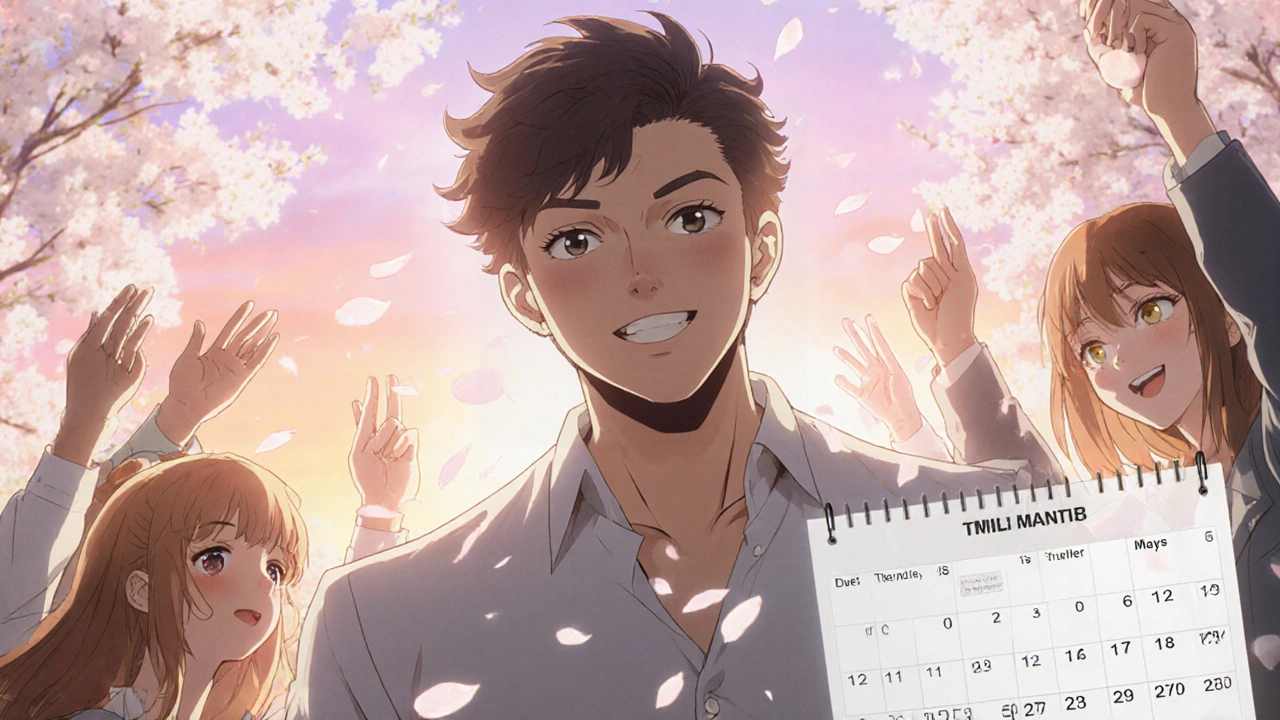Hair Loss Treatment Selector
Your Personal Situation
Treatment Preferences
When it comes to fighting male‑pattern baldness, the market is crowded with pills, sprays, lasers and even natural extracts. Picking the right solution feels like a maze, especially if you’ve heard the name Proscalpin but aren’t sure how it stacks up. This guide breaks down what Proscalpin (finasteride) actually does, who benefits most, and how it measures against the most common alternatives.
What Exactly Is Proscalpin?
Proscalpin is a brand‑name oral tablet that contains finasteride 1 mg, a prescription‑only medication approved for the treatment of androgenetic alopecia in men. The drug works by blocking the enzyme 5‑α‑reductase, which converts testosterone into the more potent hormone dihydrotestosterone (DHT). Lower DHT levels mean less follicle miniaturisation and, for many users, a noticeable slowdown in hair loss and modest regrowth on the crown.
Finasteride was first approved by the US FDA in 1992 for benign prostatic hyperplasia, and a lower dose received FDA clearance for hair loss in 1997. In the UK, the Medicines and Healthcare products Regulatory Agency (MHRA) permits the same indication, so the drug is widely available through dermatologists and specialist clinics.
How Does Finasteride Work?
The underlying cause of male‑pattern baldness is an excess of DHT in scalp tissue. DHT binds to androgen receptors in hair follicles and triggers a shortening of the anagen (growth) phase. Over time, affected hairs become thinner, shorter and eventually stop producing visible shafts.
Finasteride’s mechanism is simple: it inhibits type II 5‑α‑reductase, cutting DHT production by roughly 70 % in the scalp. By keeping DHT levels low, the drug gives follicles a chance to stay in the growth cycle longer. Most clinical trials show that 80‑90 % of men on finasteride experience either halted hair loss or measurable regrowth after 12 months.
Who Should Consider Proscalpin?
- Age group: Men aged 18-45 with early‑to‑moderate thinning on the vertex or frontal area.
- Hair‑loss stage: Norwood‑Hamilton grades II‑V benefit most; advanced balding (grade VI‑VII) may need surgical options.
- Health profile: No history of prostate cancer, liver disease or severe allergic reactions to the drug.
Women are not prescribed finasteride for hair loss because of the risk of birth defects and hormonal imbalance. A separate formulation (2 mg) exists for women with hirsutism, but that’s a different indication.
Safety, Side‑Effects and Long‑Term Considerations
Finasteride is generally well tolerated, yet a small percentage of users report side‑effects such as reduced libido, erectile dysfunction, or mood changes. Most of these issues resolve after discontinuation, but the possibility of persistent symptoms has sparked debate in the medical community.
Regular monitoring is advisable: a baseline prostate‑specific antigen (PSA) test, followed by an annual check‑up, helps catch any rare complications early. Because the drug alters hormone levels, it’s not recommended for men planning to father children in the short term; a wash‑out period of at least one month is prudent before attempting conception.

Alternative Options - Quick Overview
Below is a snapshot of the most commonly mentioned alternatives, each with a different mode of action.
- Minoxidil is a topical vasodilator originally developed for hypertension, now sold over the counter at 2 % (women) and 5 % (men) concentrations. It stimulates blood flow to follicles and prolongs the anagen phase.
- Dutasteride is a prescription pill that blocks both type I and type II 5‑α‑reductase enzymes, achieving up to 90 % DHT reduction.
- Low‑Level Laser Therapy (LLLT) uses red‑light devices (comb, helmet or cap) that purportedly improve cellular metabolism in hair follicles.
- Platelet‑Rich Plasma (PRP) therapy draws a small amount of the patient’s blood, concentrates platelets and injects them into the scalp to release growth factors.
- Saw Palmetto is a botanical extract thought to inhibit 5‑α‑reductase naturally, often marketed as a supplement.
All these alternatives target the same end goal-preserving or restoring hair-but they differ in efficacy, cost, convenience and side‑effect profile.
Side‑By‑Side Comparison Table
| Feature | Proscalpin (Finasteride) | Minoxidil | Dutasteride | LLLT | PRP | Saw Palmetto |
|---|---|---|---|---|---|---|
| Mechanism | 5‑α‑reductase II inhibitor | Topical vasodilator | 5‑α‑reductase I + II inhibitor | Photobiomodulation | Growth‑factor injection | Botanical 5‑α‑reductase blocker |
| Prescription? | Yes (1 mg tablet) | No (OTC) | Yes (0.5 mg tablet) | No (Device purchase) | No (Procedure by clinician) | No (Supplement) |
| Typical cost (first year) | £150‑£250 | £30‑£70 | £200‑£350 | £300‑£800 | £400‑£1000 | £20‑£60 |
| Evidence strength | Strong (multiple RCTs) | Moderate (large trials) | Strong (off‑label data) | Limited (small studies) | Emerging (case series) | Weak (few trials) |
| Common side‑effects | Sexual dysfunction, mood changes | Scalp irritation, itching | Similar to finasteride, plus rare urinary issues | Eye strain, scalp warmth | Injection pain, temporary swelling | GI upset, mild headache |
| Best for | Early‑stage male‑pattern baldness (vertex) | Women & men who prefer topical | Patients needing greater DHT suppression | Those looking for non‑drug, low‑maintenance option | Individuals seeking clinic‑based boost | People preferring natural supplements |
The table highlights that no single product rules them all. Your choice will hinge on how you weigh effectiveness versus convenience, cost, and tolerance for potential side‑effects.
How to Decide Which Option Fits You
- Assess the severity. If you’re in the early Norwood stages and comfortable with a prescription, finasteride (Proscalpin) gives the highest odds of success.
- Consider administration. Do you want a daily pill, a twice‑daily foam, or a device you use a few minutes a week? Preference often decides adherence.
- Check for contraindications. History of prostate issues, pregnancy plans (for partners), or allergies to topical agents can eliminate certain choices.
- Budget reality. Some treatments (PRP, LLLT) have high upfront costs but low ongoing fees. Pills and creams are cheaper long‑term.
- Talk to a professional. A dermatologist can run baseline blood work, gauge DHT levels, and help you weigh risk versus reward.

Real‑World Experiences - What Users Say
John, 32, from Manchester, started Proscalpin after a dermatology consult. After 6 months he noticed less shedding and a faint darkening of his crown. He reports mild sexual fatigue for the first two weeks, which disappeared after the third month.
Emma, 28, tried minoxidil 5 % foam for a year. She saw modest thickening but struggled with daily application and scalp irritation. She eventually switched to LLLT, paying £450 for a home laser cap, and now enjoys a maintenance routine of 15 minutes three times a week.
Mark, 45, combined dutasteride (prescribed off‑label) with low‑level laser therapy after finasteride plateaued. He attributes a noticeable return of hair density on his temples to the dual approach, though he mentions a higher cost and the need for regular blood monitoring.
Key Takeaways
- Proscalpin (finasteride) remains the most evidence‑backed oral option for male‑pattern baldness.
- Alternative treatments vary widely in cost, convenience, and scientific support.
- Choose based on severity, health profile, lifestyle preferences and budget.
- Regular follow‑up with a healthcare professional is essential for any prescription‑based therapy.
Frequently Asked Questions
Can women use Proscalpin?
No. Finasteride at the 1 mg dose is approved only for men. Women who are pregnant or may become pregnant must avoid it because it can cause birth defects.
How long before I see results with finasteride?
Most studies report visible improvement after 3‑6 months, with maximal benefit around the 12‑month mark.
Is dutasteride more effective than finasteride?
Dutasteride blocks both type I and II enzymes, so it reduces scalp DHT by up to 90 % versus about 70 % for finasteride. Clinical data suggest slightly higher regrowth rates, but the drug is not licensed for hair loss in the UK, making it an off‑label choice.
Do natural supplements like saw palmetto work?
Evidence is limited and results are modest at best. Saw palmetto may help men with mild hair loss who cannot tolerate prescription meds, but it shouldn't replace proven therapies.
Can I combine finasteride with minoxidil?
Yes, many dermatologists recommend the combo because the two drugs work via different pathways-finasteride reduces DHT, while minoxidil stimulates follicle growth. The combination often yields better results than either alone.
Ultimately, there’s no one‑size‑fits‑all answer. If you’re ready to start a prescription, talk to a dermatologist about Proscalpin. If you prefer a non‑drug route, explore the alternatives listed above and see which fits your routine and wallet.

rose rose
October 21, 2025 AT 21:34They’re hiding the real cure for hair loss in secret government labs.
Emmy Segerqvist
October 26, 2025 AT 18:14OMG!!! This whole finasteride saga is like a Hollywood thriller!!!💥💊 The plot twists, the side‑effects, the hidden agendas!!!
Trudy Callahan
October 31, 2025 AT 14:54One might contemplate, amid the sea of marketed miracles, whether the true essence of hair‑restoration lies not in a pill, but in the very philosophy of self‑acceptance, a notion that, while seemingly abstract, could be the most potent antidote to societal pressure.
Caleb Burbach
November 5, 2025 AT 11:34Exactly, Trudy! 🌟 Combining evidence‑based meds with a positive mindset can truly amplify results. Keep the faith, the journey’s worth it! 😊
Danica Cyto
November 10, 2025 AT 08:14The battle against thinning crowns is more than a clinical trial; it is a silent war waged in the shadows of corporate boardrooms. Every advertisement whispers promises while invisible hands manipulate data to keep us dependent. I often wonder if the true cure is being suppressed because it threatens a multi‑billion‑dollar empire. Yet, at the same time, I feel a personal responsibility to examine my own reflection without the noise. Perhaps the answer lies in a balanced diet of knowledge, patience, and a pinch of skepticism. Finasteride, dutasteride, even saw palmetto each carry their own story, each written by those who profit. The side‑effects reported, though rare, serve as cryptic clues that the system is not as benign as it pretends. In my experience, the emotional toll of watching hair disappear is as heavy as any physiological change. The feeling of losing control can become a vampire that feeds on confidence. Still, I have witnessed friends who, after careful monitoring, regain a semblance of their previous selves. This suggests that within the tangled web, strands of hope persist. It also signals that vigilance and regular check‑ups are indispensable allies. When we confront the dilemma, we must ask whether we trust blind faith or demand transparent science. The answer, I suspect, is a hybrid of both: embracing proven treatments while questioning their narratives. In the end, the hair on our heads may grow or recede, but the critical mind should always stay robust. Keep your eyes open, your scalp healthy, and never let the hidden agenda dictate your self‑esteem.
Raja M
November 15, 2025 AT 04:54Danica, you’ve nailed the emotional side of this journey. I’m glad you highlighted monitoring; staying in touch with a doctor is key. Stay strong and keep the conversation open!
Miah O'Malley
November 20, 2025 AT 01:34Wow, this thread is a goldmine! I’ve tried minoxidil and laser caps together, and the combo gave me noticeable density after a few months. Anyone else mixing treatments to see a boost?
bill bevilacqua
November 24, 2025 AT 22:14Honestly, all this talk is just a waste of time... US made products r the best, why even look at foreign stuff??!!!